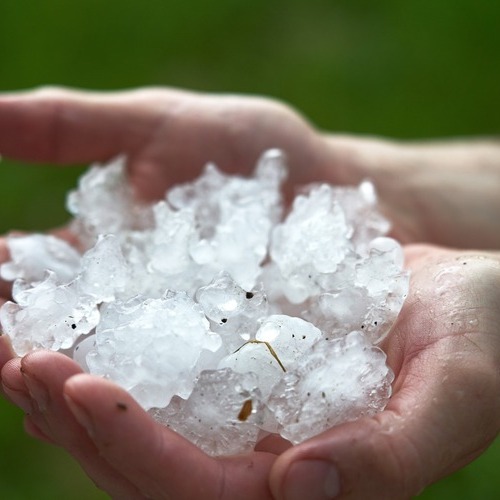
What Is the Most Hail-Resistant Roofing?
If a homeowner in Dallas, Texas understands what they need, they will have hail-resistant roofing. Texas may be at the southernmost end of the infamous “Tornado Alley.” Still, homes and businesses get their fair share, maybe even more, of hailstorms and high winds, making hail-resistant roofing essential for keeping a house or building safe during storms.
What are hail-resistant roofs?
The shingles on hail-resistant roofs are manufactured with an asphalt formula of styrene-butadiene-styrene, also referred to as rubberized asphalt. Instead of breaking and cracking the shingles, the hailstones bounce off.
Shingles must pass the UL-2218 impact test to be eligible as hail-resistant roofs. This industry rating confirms their hail resistance, and once they pass this industry-standard testing, they obtain a Class-4 rating.
How are shingles tested to be classified as hail-resistant roofs?
Professionals perform tests in a controlled UL (Underwriters Laboratories) laboratory by dropping a steel ball from various heights. The Class 4 rating is the highest level of impact for hail-resistant roofs and protects them from hailstones of up to two inches in diameter. It certifies that shingles will not break or crack during a hailstorm.
What type of damage can hailstones cause?
In general, even a 1” hailstone can cause damage when accompanied by strong winds at a particular trajectory. As hailstones become bigger, the potential damage they can cause also increases. The Tornado and Storm Research Organization measures hailstones with a scale of H0 to H10. The damage that can occur with various sizes of hailstone is:
- Pea-size hailstones: These measure between .2 and .4 inches and are classified as H0. They usually do not cause noticeable damage.
- Mothball-size hailstones: These measure between .2 and .8 inches and are classified as H1. They have the potential to damage objects such as flowers and leaves.
- Grape-sized hailstones: These measure between .2 and 1.2 inches and are classified as H2. They can cause significant damage to gardens and vegetables.
- Walnut-sized hailstones: Measuring between .4 and 1.8 inches, these are classified as H3 and can break glass, scrape painted surfaces, splinter wood, and dent metal.
- Table tennis ball-sized hailstones: Measuring between .6 and 2.4 inches and having an H4 classification, these hailstones are capable of breaking windows, scraping painted surfaces, and killing small birds and creatures.
- Golf ball-sized hailstone: Measuring between .8 and 3 inches and classified as H5, these hailstones can break tiles on roofs that are not hail-resistant and can dent cars, break tree branches and bark, and kill small animals.
- Jumbo egg-sized hailstone: Measuring 1.2 to 3.9 inches and classified as H6, these hailstones can punch through roofing that isn’t hail-resistant, break window frames, and score metal surfaces.
- Tennis ball-sized hailstones: Measuring between 1.8 and 4.9 inches and having an H7 classification, these hailstones can shatter roofing that isn’t hail-resistant, break window frames, and cause damage to cars.
- Softball-sized hailstones: Measuring between 2.4 and 5 inches, this H8 classification stone can break shingled and tile roofing, destroy concrete roofs, destroy small trees, and harm humans.
- Grapefruit-sized hailstones: Classified as H9 and starting at 3.2 inches, these stones can destroy roofing, wood walls, and large trees and cause fatal injuries.
- Melon-sized hailstones: Classified as H10 and starting at 4,” these stones can damage a brick wall, destroy wooden walls, and cause death.
What is the most hail-resistant roofing?
While shingles labeled for hail-resistant roofs are ideal for most homes, other roofing materials are suitable as well, including:
Metal Roofing
Metal roofing has been around forever, standing the test of time and protecting homes from hailstones. It has gained popularity for residential properties over the last few years because it is just as good for hail-resistant roofs. Many roofing contractors claim it is more durable in deflecting hailstones.
Slate or Tile Roofing
Slate and tile roofing are known for beauty, longevity, and hail resistance. Although they are more expensive than shingles for hail-resistant roofs, they last longer, and you won’t ever need a new roof again.
Rubber Roofing
Rubber or synthetic roofing material has gained popularity and is still growing. It is manufactured to look like standard shingles but provides more protection for hail-resistant roofs.
How long do hail-resistant roofs last?
Class 4 shingles for hail-resistant roofs have a higher price tag than standard asphalt shingles, but because they will last between 30 and 50 years when properly installed and maintained, they can save you money over time.
Topping Off Your Home
Are the shingles labeled for hail-resistant roofs worth the extra cost? Absolutely! Wouldn’t you feel better knowing that while your roof is getting pelted with golf-ball-sized hailstones or tennis-ball-sized hailstones, it’s being kept safe?
